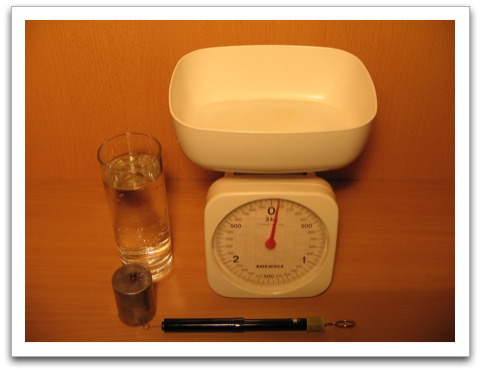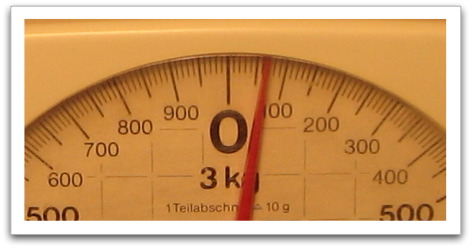Archimedes' principle
Now we put the metal block (which is still attached to the spring scale) into the glass of water. We can make the following observation (see picture below):
- The metal block has a determined volume. If we put this volume into the glass full of water, the same volume of water will flow out of the glass. The volume of the metal block displaced the volume of water. The water which flows out is kept in the scale pan.
- The spring scale now displays only 6 sectors, which equals a mass of 120 g. The metal block "lost" around 60 g because we put it into the water! This means that an upward force exerts on a body which is immersed in water. We call this force "buoyant force".

Now we determine the mass of water which overflowed (because this water is in the scale pan, we can weigh it easily).

The mass of water displaced by the metal block is 60 g.
Didn't we measure this weight of 60 g before?
Yes we did! The metal block "lost" around 60 g after we put it into the water! This seemingly loss of weight is a result of the buoyancy.

Archimedes was the first who discovered the relation between displaced water and buoyancy. The Archimedes' theorem, which was named after him, implies:
The buoyant force on a submerged object is equal to the weight of the fluid displaced.
To make things easier, the mass instead of the gravitational force is looked at, because the mass is proportional to the gravitational force. (G=m ⋅ g).
Examples:
A body which displaces 80 g of water when immersed in water, seemingly looses 80 g of its weight.
A body which displaces 150 g of water when immersed in water, seemingly looses 150 g of its weight.
